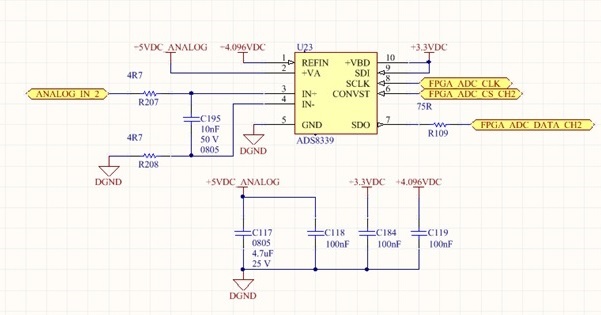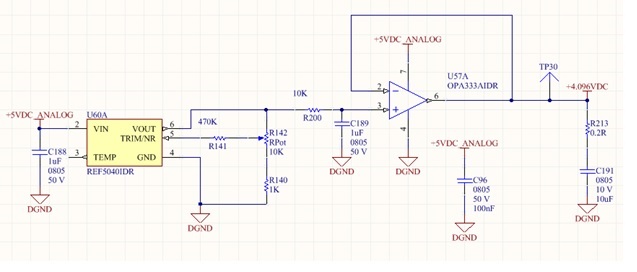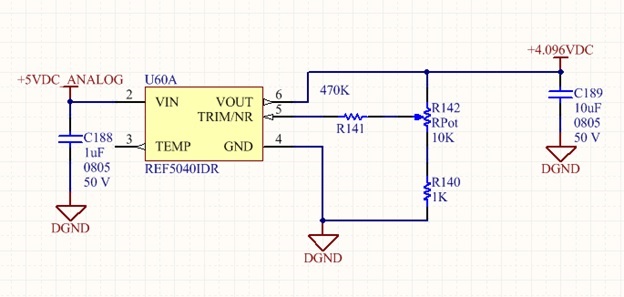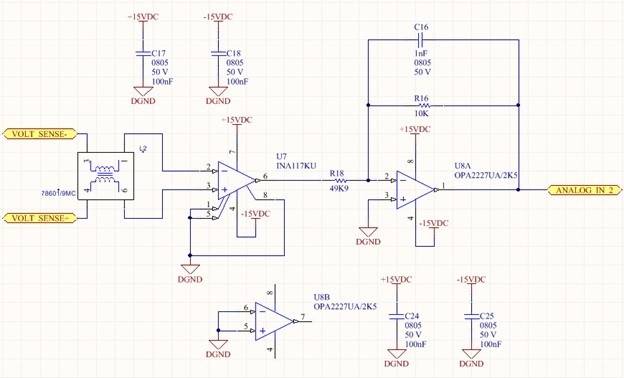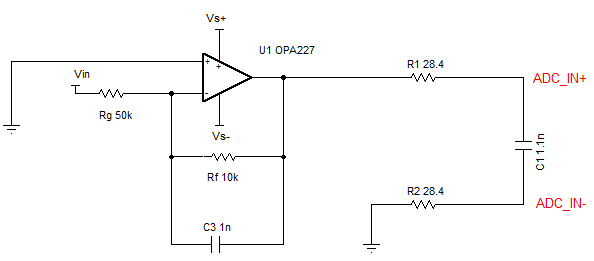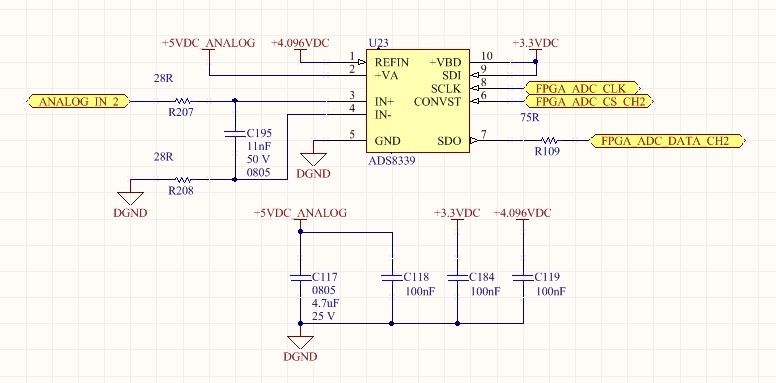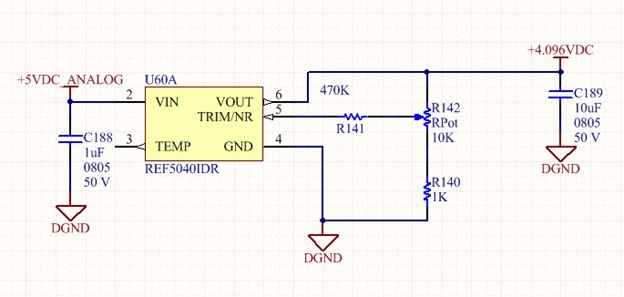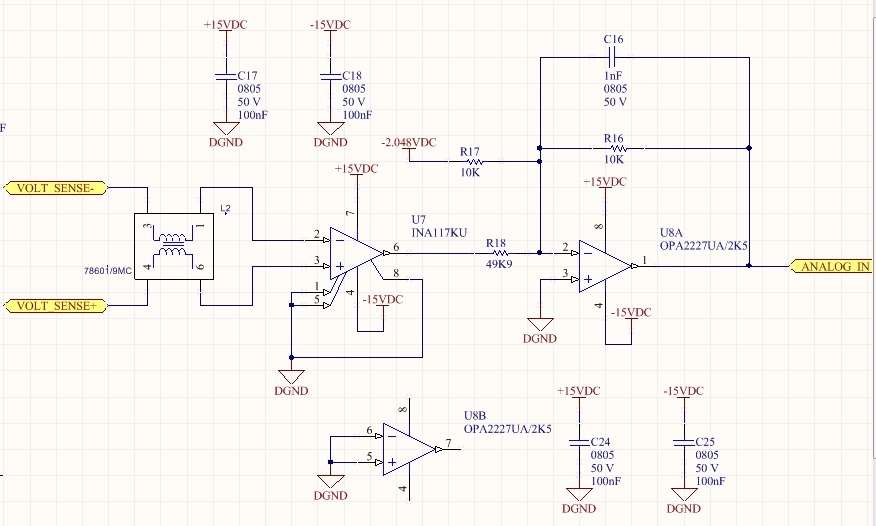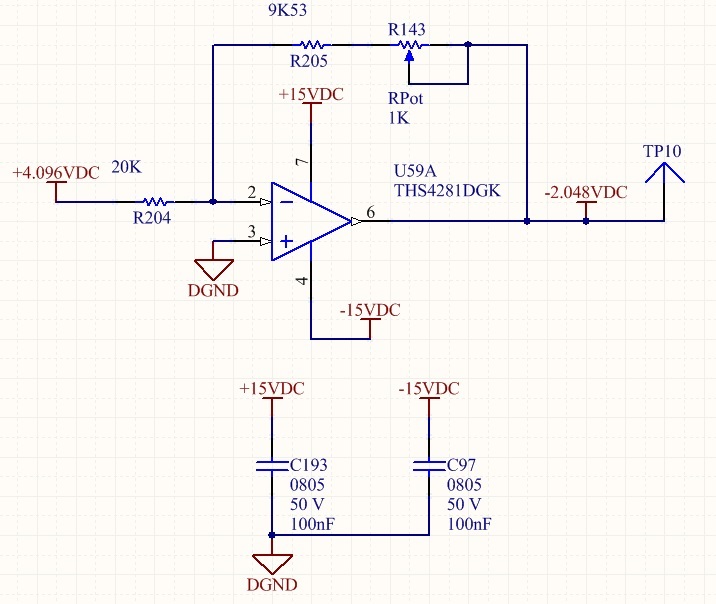Other Parts Discussed in Thread: OPA227, OPA333, OPA320, INA117, THS4281, OPA2227
Hello,
Below is a partial circuit schematic of a circuit using an ADS8339 ADC.
The analog_in_2 net is from an external source referenced to the same DGND. If this external source is disconnected, the analog_in_2 point floats at about 2.4V relative to DGND.
I do not understand how this 2.4V is generated. It appears it is being sourced by the input pin.
If I connect analog_in_2 to an opamp outputting 0V, referenced to the same ground, the 2.4V disappears but the ADC measurement is nowhere near 0V, instead varying between 1190 to 1300 counts.
Can someone from TI give me some suggestions as to what cause this behavior with this part? Something with the layout or voltage reference? I have used other TI ADCs like the 12 bit ADS7822U without issue.
Thanks!


